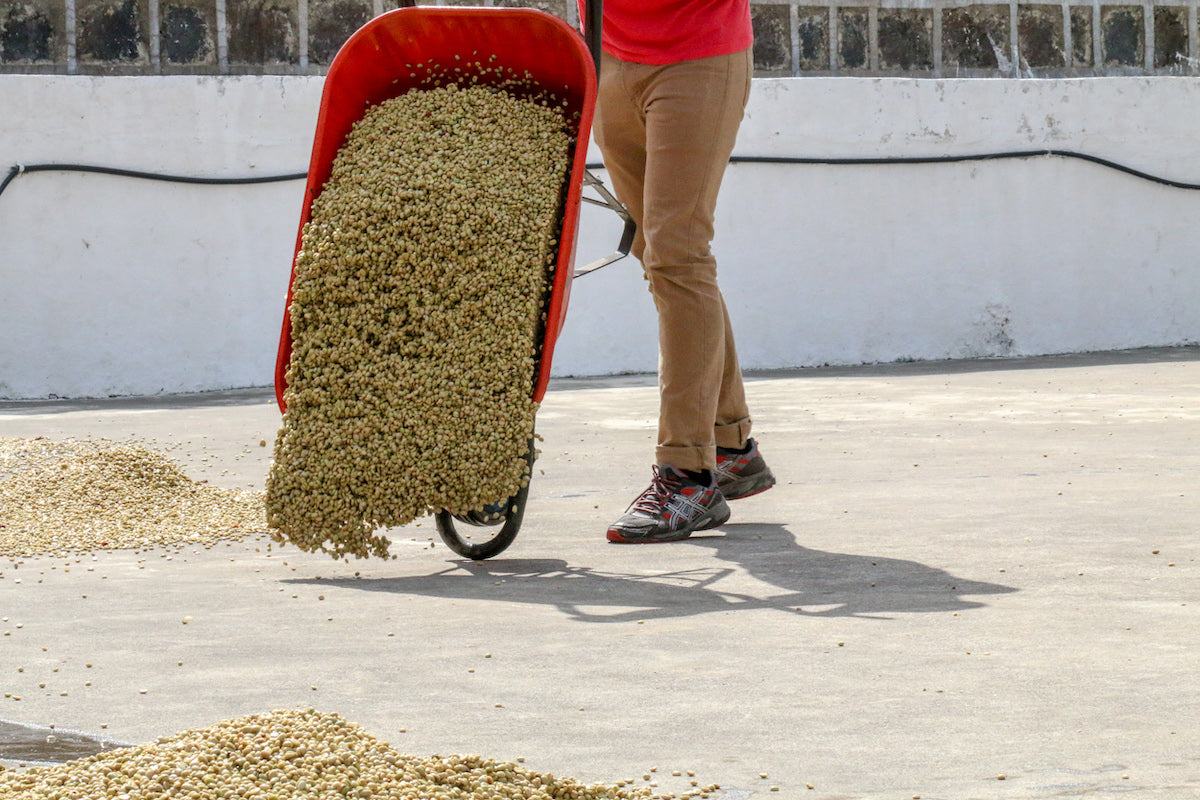
When it comes to quality coffee production, Guatemala is undoubtedly one of the powerhouses. Known for its unique, high-quality beans that boast of incredible flavours, Guatemala has secured its place on the global stage. We want to take you on a journey through the coffee landscapes of Guatemala, unraveling the meticulous process of coffee production from bean to cup.
Historical Perspective on Guatemalan Coffee
The origins of coffee in Guatemala date back to the 18th century, but it wasn't until the late 19th century that coffee began to play a significant role in the nation's economy. The liberal reforms of the late 1800s made coffee the country's primary export crop, shaping Guatemala's agricultural landscape as we know it today.
Geographical and Climatic Factors
Guatemala’s diverse geography, marked by high mountains, volcanic soils, and a range of microclimates, provides the perfect conditions for growing high-quality Arabica coffee. The country's eight coffee-growing regions - Acatenango Valley, Antigua Coffee, Traditional Atitlán, Rainforest Cobán, Fraijanes Plateau, Highland Huehue, New Oriente, and Volcanic San Marcos - each have their distinct climatic conditions and flavour profiles, contributing to the remarkable diversity of Guatemalan coffee.
Coffee Cultivation and Processing
In Guatemala, the coffee industry is dominated by small-scale producers, with family-owned farms accounting for the majority of production. The cultivation process begins with planting the coffee trees in rich, volcanic soil. These trees are often grown under shade to protect them from the intense Guatemalan sun and to preserve the soil's fertility.
When the coffee cherries reach their peak ripeness, they are hand-picked - a labor-intensive process that ensures only the best quality cherries are harvested. The harvest season usually runs from December through April, aligning with the dry season, which is crucial for the post-harvest processing.
After the cherries are harvested, they undergo a processing stage to remove the pulp and mucilage. In Guatemala, the most common method is the washed process, which involves soaking the coffee cherries in water to remove the pulp, fermenting them to break down the mucilage, and then thoroughly washing the beans. This method brings out the bright acidity and complex flavours that Guatemalan coffees are celebrated for.
Quality Control and ANACAFÉ
The National Coffee Association of Guatemala (ANACAFÉ) is a non-profit organisation representing Guatemalan coffee producers. ANACAFÉ plays a crucial role in maintaining quality control, promoting sustainable farming practices, and supporting research and development in the coffee sector. Their stringent quality control process guarantees that Guatemalan coffee consistently meets high standards.
Guatemalan Coffee in the Global Market
Guatemala is one of the top coffee-exporting countries globally, renowned for its premium and specialty coffees. The unique profiles of Guatemalan coffees, characterised by their bright acidity, full body, and distinct flavours varying from region to region, are treasured by coffee aficionados worldwide.
Future Outlook
Looking forward, the Guatemalan coffee industry is focusing on sustainability, coffee quality, and adaptation to climate change. Efforts are being made to explore new coffee varieties and implement innovative farming practices to counter the effects of global warming. Moreover, initiatives are underway to promote direct trade and specialty coffee production, which not only improves the livelihoods of coffee farmers but also ensures the continued production of exceptional Guatemalan coffee.
Conclusion
The narrative of Guatemalan coffee is woven with rich textures of history, cultural resilience, and the stunning geography of the land. Each cup captures the essence of the country’s diverse terrains, the dedication of its farmers, and the painstaking precision poured into every stage of the production process.
The Guatemalan coffee industry, with its unwavering commitment to quality, has continually offered the world some of the finest coffees. This commitment extends beyond the flavours and aromas in your cup to include sustainable farming practices and fair trade, ensuring the legacy of Guatemalan coffee continues to thrive for generations to come.
As the industry evolves and adapts to future challenges, it does so with the intention of preserving and enhancing the very aspects that make Guatemalan coffee so distinct: its quality, diversity, and the commitment of its people.
So, as you relish your next cup of Guatemalan coffee, savour the depth of flavours, the bright acidity, and the full body. And remember, you're not just savouring a great cup of coffee; you're also appreciating the heritage and the extraordinary journey of Guatemalan coffee from the volcanic soils of the highlands to your cup.
Check out our Guatemala Single Origin: CLICK HERE
Photo by: Cafe Imports
